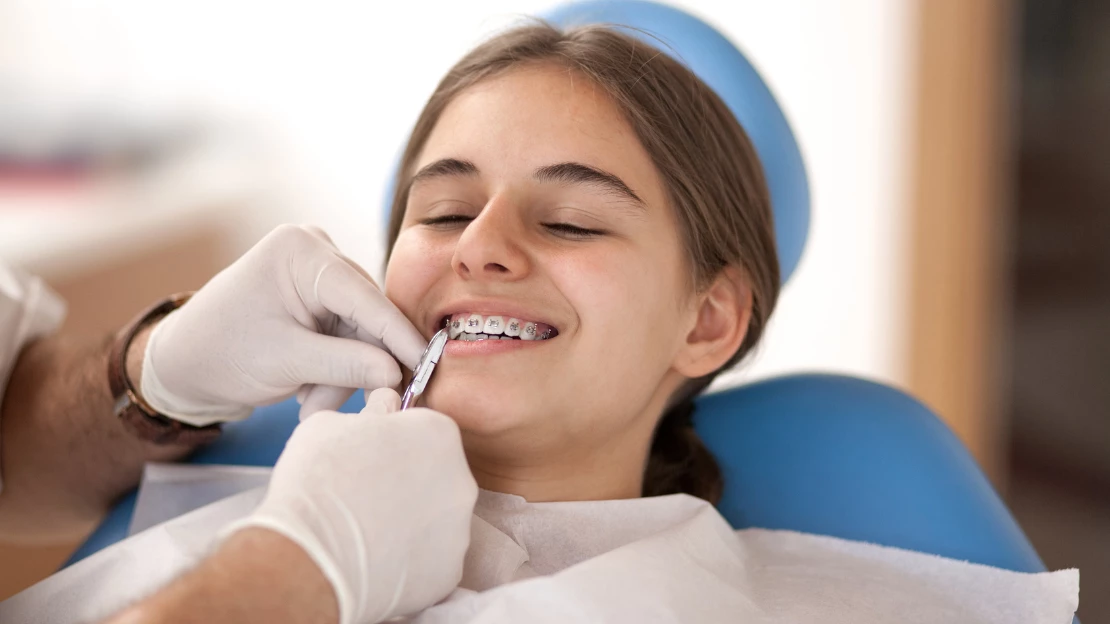The Single Strategy To Use For Legacy Orthodontics
Wiki Article
The Basic Principles Of Legacy Orthodontics
Table of Contents5 Easy Facts About Legacy Orthodontics DescribedThe Only Guide to Legacy OrthodonticsAn Unbiased View of Legacy OrthodonticsThe Legacy Orthodontics DiariesThe Buzz on Legacy Orthodontics
At Advanced Orthodontics, we provide clients with a all natural therapy experience. Furthermore, we provide flexible treatment routines, flexible payment options and an enjoyable, satisfying experience. orthodontics. Telephone call ( 480) 357-4900 today for additional information and routine a consultation.An orthodontist is a dentist trained to diagnose, protect against, and deal with teeth and jaw irregularities. Orthodontists work with individuals of all ages, from kids to adults.
Malocclusion, or misaligned teeth, can lead to oral problems, consisting of dental caries, gum tissue illness, and difficult or excruciating chewing. Not everybody is birthed with straight teeth. If you have a poor bite or big spaces in between your teeth, you might desire to consult a dental expert focusing on orthodontic treatment.
Not known Facts About Legacy Orthodontics
( Photo Credit Scores: DigitalVision/Getty Images) Orthodontists use taken care of and detachable oral tools, like dental braces, retainers, and bands, to alter the position of teeth in your mouth. Orthodontic treatment is for dental irregularities, including: Jagged teethBite problems, like an overbite or an underbiteCrowded teeth or teeth that are too much apartJaw misalignmentThe objective of orthodontic treatment is to boost your bite.While you could assume of orthodontists as primarily for youngsters or young adults that require braces, they can correct oral issues at any type of age. Orthodontists go to university, dental institution, and orthodontic institution.
, however not all dental experts are orthodontists. They focus on two areas: How to correctly and safely move teeth Exactly how to appropriately assist development in the teeth, jaw, and faceOnce an orthodontist has completed training, they have the option to end up being board accredited.
Legacy Orthodontics for Dummies
Imbalance, or malocclusion, is one of the most usual factor people see an orthodontist. It is hereditary and is the result of size distinctions in between the upper and reduced jaw or in between the jaw and teeth. Malocclusion leads to tooth congestion, a twisted jaw, or irregular bite patterns. Malocclusion is usually treated with: Your orthodontist affixes metal, ceramic, or plastic square bonds to your teeth.If you have just minor malocclusion, you might be able to utilize clear dental braces, called aligners, rather of typical braces (https://www.anyflip.com/homepage/oxhxt). Some individuals require a headgear to help relocate teeth right into line with pressure from outside the mouth. After dental braces or aligners, you'll need to put on a retainer. A retainer is a custom-made device that maintains your teeth in position.
They're most usually used on children. They can develop added space in the mouth without having to pull teeth. If you have a severe underbite or overbite, you could require orthognathic surgery (likewise called orthodontic surgical procedure) Click Here to lengthen or shorten your jaw. Orthodontists utilize cords, medical screws, or plates to sustain your jaw bone.
You might require to see an orthodontist if you have: Crowding or not enough space for all of your teethOverbite, when your top teeth come by your bottom teethUnderbite, when your bottom teeth are as well much forwardSpacing or issues with gapsCrossbite, which is when your upper teeth fit behind your bottom teeth when your mouth is closedOpen bite or a vertical gap in between your front bottom and upper teethMisplaced midline, when the facility of your base and upper teeth don't line up Fixing an oral malocclusion can: Make attacking, chewing, and talking easierImprove the proportion of our face and your overall appearanceEase discomfort from temporomandibular joint disordersSeparate your teeth and make them easier to clean, helping stop dental cavity or cavities It's frequently a dentist who initially notifications misaligned teeth during a routine exam.
Some Of Legacy Orthodontics

Throughout your first orthodontic examination, you'll likely have: A dental examPhotos taken of your face and smileDental X-raysPanoramic (360 degree) X-rays of your face and headImpressions to develop molds of your teethThese examinations will assist your orthodontist understand exactly how to continue with your treatment. braces. An orthodontist is a dental professional who's had training to treat your teeth and jaw
Orthodontists may carry out surgical procedure, exams,X-rays,and more to aid you obtain a much more comfortable, much healthier smile. An orthodontist is concentrated on your bite, so something like a damaged tooth would be managed by a dentist. Orthodontists are dental experts however not all dental professionals are orthodontists. Orthodontists are concentrated on your bite, or the means your teeth fit with each other, and the straightness of your teeth. Ever wondered just how stars always appear to have completely aligned teeth? The solution commonly hinges on the competent hands of an orthodontist. What precisely does an orthodontist do? Orthodontists are oral experts that concentrate on remedying irregularities in the teeth and jaws. Their knowledge exceeds simply creating a stunning smile; it extends to boosting your total oral wellness and function.
The Best Guide To Legacy Orthodontics

, orthodontists have a varied toolkit at their disposal. These reliable dental braces use a system of braces bound to the teeth and linked by cables.
Clear aligners, like Invisalign, are a preferred choice for people seeking a more very discreet therapy option. These removable trays are customized to considerably change the teeth's placement. Headgear might be used in conjunction with braces or aligners to use added targeted pressures, especially for fixing jaw discrepancies. In cases of slim jaws, palatal expanders can be made use of to produce space for proper tooth alignment.
Report this wiki page